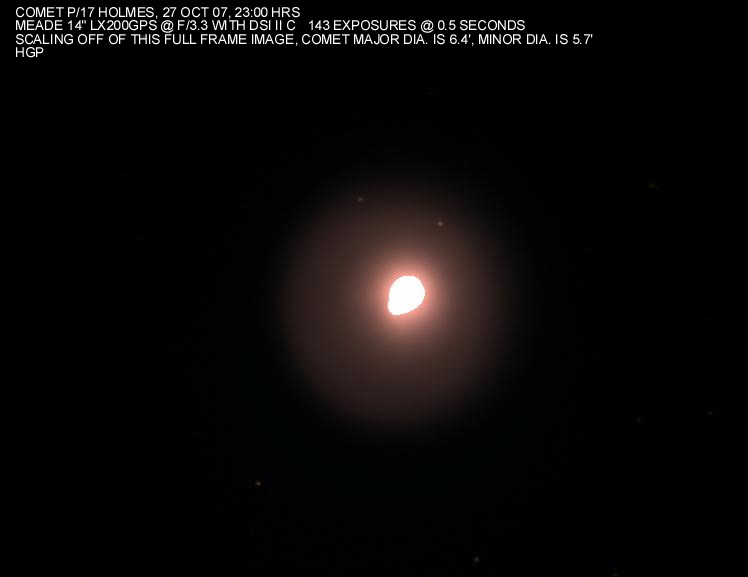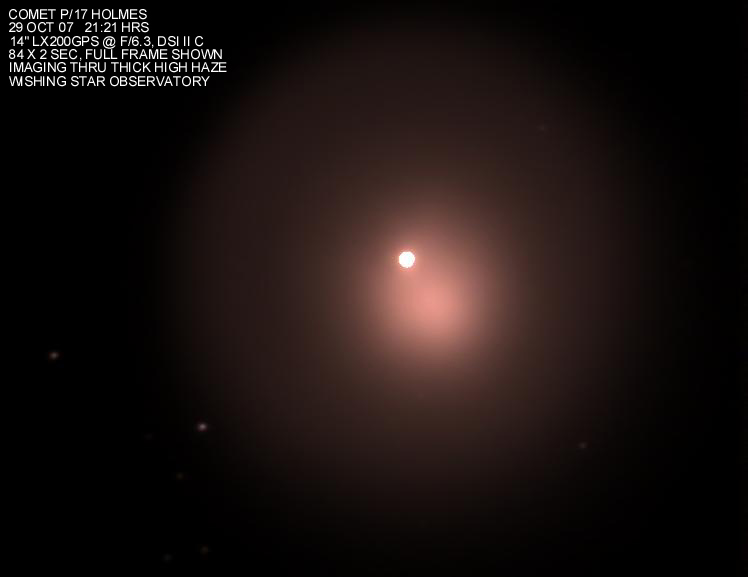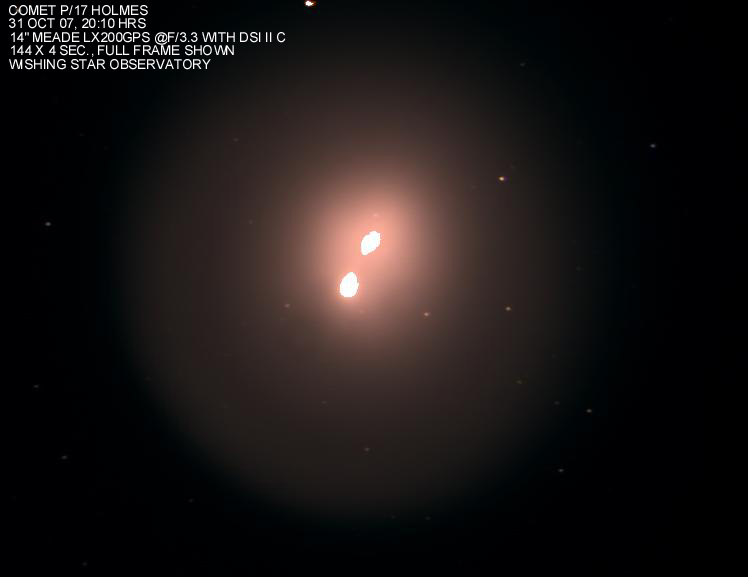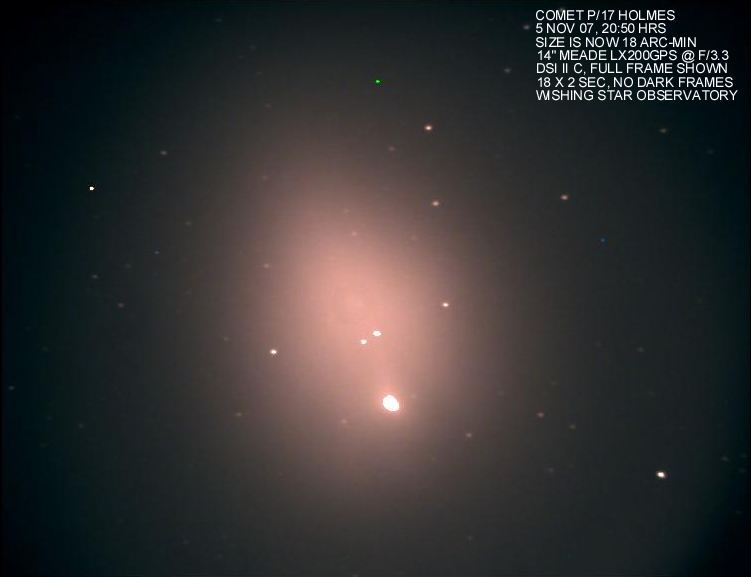Quoting from SpaceWeather.com: "On 24 Oct 06, Comet Holmes shocked sky watchers with
a spectacular eruption, brightening almost a million-fold from17th to 2.5th
magnitude in a matter
of hours. At 3.2 magnitude, the comet is now visible to the naked eye - even from
light polluted cities.
Coma major diameter is 2.3 arc-minutes.
The full comet name is P/17 Holmes. P
means that the comet is periodic, and that its highly
eliptical orbit carries it into our inner solar system on a regular basis.
17 means that it was
the 17th peroidic comet to be discovered (comet P/1 Haley was the first).
The comet was
discovered by British amateur astronomer Edwin Holmes on November 6, 1892 while
he was
conducting regular observations of the Andromeda Galaxy. Its
discovery in 1892 was made
because of and during magnitude changes similar to the present 2007
outburst.
In 1892 17P/Holmes brightened to an
approximate magnitude of 4 or 5 before fading from visibility over
a period of several weeks. In 2007 the change was even more
dramatic, going from a relatively dim
17th magnitude to approximately 2nd magnitude - a 6 million times increase in
brightness!
Below is a full frame image
taken just 2 days after the first image. The original pix taken 10/25
was cropped so you can't compare directly, but the coma on Holmes has grown from
a major
diameter of 2.3' to almost 3 times that size, while continuing to further
brighten to 1.9 magnitude.

For the image above, Holmes is 150 million miles from Earth and moving almost directly away from us. It's actually moving away from us at an angle of only 16°. One possible reason for the off-center nucleus is that we're seeing part of the comet's tail poking out to one side of the coma. Another possible reason is associated with the distorted nucleus. Perhaps an ice area has been uncovered causing a burst of dust that's distorting both the nucleus and the coma.
The next 6 images on Oct 28th, 2007. Holmes is passing close by a double star - which created some initial confusion as Holmes may have ejected something very bright from its nucleus. None of my previous images of this comet were taken at this higher resolution, and I don't know if this bright spot existed previously or was what showed as the original nucleus. It is strange that the bright spot is not in the brightest area of the comet.
Wish I could figure out how to animate this sequence with images taken every 30 minutes. The first was taken at f/3.3 and it didn't separate the ejected material cleanly, so the remaining pix were taken at f/6.3






This image was taken the
following night - Oct 29th, 2007. The brightening is probably due
to increased exposure time in an attempt to image through a high thick
haze. It appears to be
exactly the same as on the 28th.

This image was taken on Oct 31st, using the
same camera and frame size as the 2nd and 3rd images
in this series. Compare the difference. Holmes is at 150 million
miles distance but is now 12.1
arc-minutes in size. (Full frame height it 14.65 arc-minutes).
Holmes has grown to 528,000 miles in
diameter - and is now 60% the size of the Sun! The
lower bright object is the nucleus
(or the outburst from the nucleus). The upper bright object is just pixel
saturation from the bright
comet core.

The following image taken 5 Nov 07. Holmes continues to grow in size, if not in brightness, and seems to be forming into more of what "a comet looks like".
